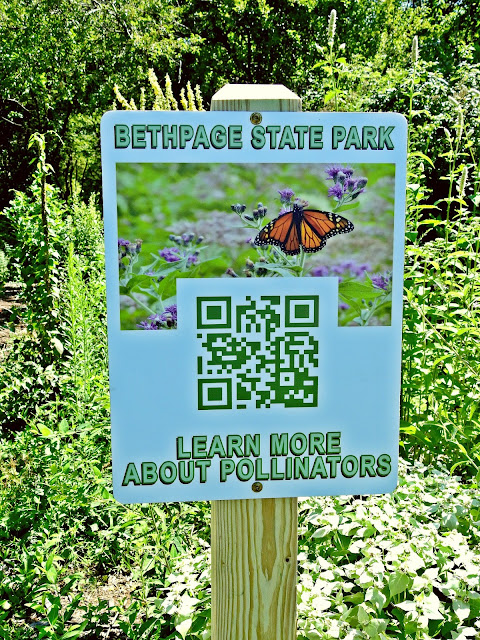Bethpage State Park's Black Course is home to two owl babies this year! This time the occupied nest is on #7 of the Black Course, a typical spot for our familiar nesting pair. This comes shortly after re-vamped cones were installed (this winter) to encourage local Great Horned Owls to nest!
~ Nests are high in the tree canopy and usually in White Pine trees.
The specific spot chosen on the Black Course is an ideal location for our owls because it serves as an intermediate area between two habitat types: a forest edge and open golf fairway. Being on this border means easy access to hunting grounds while also providing enough tree cover for protection.
Peeking in with a cherry picker, staff are able to examine the nest weekly. Two eggs were found (which were laid in early February). As weeks passed, the female owl incubated her eggs while the male kept a look out and brought her food. On March 4th, staff was delighted to find two fluffy white offspring nestled in the center of the nest cone (one hiding behind the other in the photo above). This downy duo was just a few days old! Did you know that for a week or so after hatching, owlets keep their eyes closed? Even after that, their eyesight remains poor.

Not to worry though, owlets are not expected to do much except look cute! Parents provide all the needed care for growing chicks with hungry appetites (and they do a phenomenal job). In fact, of all the birds-of-prey we have at the park, these owls are the most skilled when it comes to hunting. Fine hearing, stellar night vision, and silent flight are just a few of the many advantages they have over their prey. Additionally, owls are also generalists. This means their diet is incredibly mixed, from birds to mammals of all shapes and sizes (mice, squirrels, chipmunks and rabbits).
About two and a half weeks later, the nest was monitored from ground-level, where we were happy to see at least one of the two chicks. Offspring seem not only to be growing bigger but more alert too. Pictured below is Mom and baby checking us out, while we check in on them!
On April 6th, we checked back in via cherry picker and this was the most exhilarating visit yet! It was obvious that the chicks had grown significantly. Their fluffy white coats were replaced with juvenile plumage and the tufts above their head (that explain their name "Great Horned") had appeared. At first, the two chicks were facing the other direction...but then, sure enough, one owlet noticed us.
We were shown that iconic owl head turn of at least 180 degrees. A few moments later, the second owlet did the same.
The owlet on the left then did a full body rotation, stood up, displayed their primary feathers...even showed us its inner eyelids.
Thats right, birds have whats called a nicitating membrane.
This acts as a protective cover, while still allowing the animal to use sight (see the photo below).
Be sure to click the video below, to get a click glimpse of it all!
Keep in mind, all this great news is just the report from the Black Course.
On #7 fairway of the Red Course, we also have a nest with two chicks (7 must be the lucky number for 2021)! It seems this owl family is doing just as well as those on the Black Course. The one difference is that this owl home appears to be an old, vacant Red-tailed Hawk nest.
While cherry picker access is impossible on the Red, we have been monitoring from the ground weekly. Mom has it all taken care of (look at her on watch, below)!
We hope this post is a nice kick off to all the growth that's in store this season at our park!
Happy Spring!













I love the photos and how close you were able to get to the owls. That Mom owl looks like she means business!
ReplyDeleteThank you! Yes, we are so lucky to be able to monitor them up close (but still at a safe distance). You are right about mom too -- She is the best! The parental care provided by Great Horned Owls is definitely something to be admired!
ReplyDelete